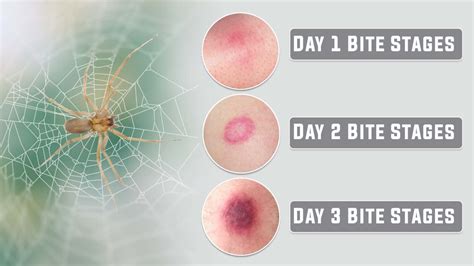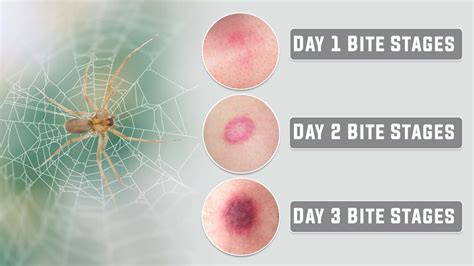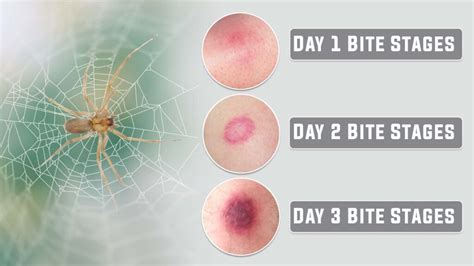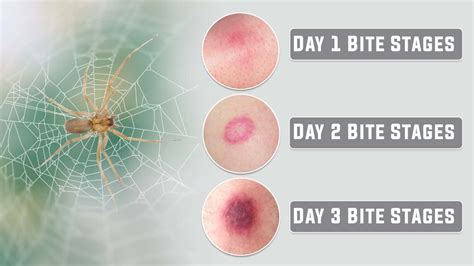Intro
Identify Brown Recluse spider bite symptoms, including necrotic lesions, severe pain, and systemic reactions, to seek timely medical treatment and prevent complications like infection and scarring, recognizing the distinctive violin-shaped mark.
The brown recluse spider is a venomous spider native to North America, recognized by its distinctive brown color and violin-shaped mark on its body. While they are generally not aggressive, their bites can be extremely painful and potentially serious. Understanding the symptoms of a brown recluse spider bite is crucial for prompt medical attention and effective treatment. The importance of recognizing these symptoms cannot be overstated, as early intervention can significantly improve outcomes. Moreover, being aware of the signs and symptoms can help individuals take preventive measures to avoid bites in the first place.
Brown recluse spider bites are relatively rare, but they can occur when the spider feels threatened or cornered. The venom from the bite contains a compound called sphingomyelinase D, which can cause significant tissue damage and necrosis. It's essential to be aware of the potential consequences of a brown recluse spider bite, including the possibility of long-term scarring and, in severe cases, life-threatening complications. By educating oneself on the symptoms and taking necessary precautions, individuals can minimize the risk of encountering these spiders and reduce the likelihood of a bite.
The symptoms of a brown recluse spider bite can vary in severity, but they often follow a predictable pattern. Initially, the bite may appear as a small, red, and painful lesion, which can gradually worsen over time. As the venom takes effect, the surrounding tissue may become necrotic, leading to the formation of a black eschar. It's crucial to monitor the wound closely and seek medical attention if any signs of infection or severe reaction occur. In addition to the local effects, some individuals may experience systemic symptoms, such as fever, chills, and nausea, which can indicate a more severe reaction.
Identifying Brown Recluse Spider Bite Symptoms

Identifying the symptoms of a brown recluse spider bite requires attention to detail and a basic understanding of the spider's venom. The bite typically begins with a sharp, stinging sensation, followed by redness, swelling, and pain. As the venom spreads, the affected area may become blistered, and a necrotic lesion can form. In some cases, the bite may resemble a bullseye, with a central area of necrosis surrounded by a ring of redness. It's essential to monitor the wound closely and seek medical attention if any signs of infection or severe reaction occur.
Common Symptoms of Brown Recluse Spider Bites
Some common symptoms of brown recluse spider bites include: * Severe pain at the bite site * Redness and swelling * Blistering or necrosis * Fever and chills * Nausea and vomiting * Headache and fatigue It's crucial to note that not all brown recluse spider bites will exhibit all of these symptoms, and the severity of the reaction can vary significantly from person to person.Stages of Brown Recluse Spider Bite Symptoms

The symptoms of a brown recluse spider bite can progress through several stages, each with distinct characteristics. Initially, the bite may appear as a small, red, and painful lesion, which can gradually worsen over time. As the venom takes effect, the surrounding tissue may become necrotic, leading to the formation of a black eschar. In some cases, the bite may become infected, leading to increased redness, swelling, and pus. It's essential to monitor the wound closely and seek medical attention if any signs of infection or severe reaction occur.
First Stage: Initial Bite Reaction
The initial reaction to a brown recluse spider bite typically occurs within the first few hours after the bite. During this stage, the bite may appear as a small, red, and painful lesion, which can gradually worsen over time. Some common symptoms of the initial reaction include: * Severe pain at the bite site * Redness and swelling * Blistering or necrosis It's crucial to note that not all brown recluse spider bites will exhibit all of these symptoms, and the severity of the reaction can vary significantly from person to person.Treatment and Management of Brown Recluse Spider Bite Symptoms

Treatment and management of brown recluse spider bite symptoms typically involve a combination of wound care, pain management, and antibiotics. In some cases, surgical debridement may be necessary to remove necrotic tissue and promote healing. It's essential to seek medical attention promptly if any signs of infection or severe reaction occur.
Wound Care and Management
Proper wound care and management are crucial for promoting healing and preventing infection. Some tips for wound care include: * Keeping the wound clean and dry * Applying topical antibiotics to prevent infection * Covering the wound with a sterile dressing * Elevating the affected area to reduce swelling It's essential to monitor the wound closely and seek medical attention if any signs of infection or severe reaction occur.Prevention of Brown Recluse Spider Bite Symptoms

Prevention is key when it comes to avoiding brown recluse spider bites. Some tips for preventing bites include:
- Sealing entry points to prevent spiders from entering the home
- Keeping the home clean and clutter-free
- Wearing protective clothing when working in areas where spiders may be present
- Avoiding reaching or stepping into dark or undisturbed areas It's essential to be aware of the potential risks and take necessary precautions to minimize the likelihood of a bite.
Avoiding Brown Recluse Spiders
Avoiding brown recluse spiders is the most effective way to prevent bites. Some tips for avoiding these spiders include: * Being aware of their presence in the environment * Avoiding reaching or stepping into dark or undisturbed areas * Wearing protective clothing when working in areas where spiders may be present * Sealing entry points to prevent spiders from entering the home It's crucial to be aware of the potential risks and take necessary precautions to minimize the likelihood of a bite.Conclusion and Final Thoughts

In conclusion, understanding the symptoms of a brown recluse spider bite is crucial for prompt medical attention and effective treatment. By being aware of the potential risks and taking necessary precautions, individuals can minimize the likelihood of a bite. It's essential to monitor the wound closely and seek medical attention if any signs of infection or severe reaction occur.
We invite you to share your thoughts and experiences with brown recluse spider bites in the comments below. Have you or someone you know been bitten by a brown recluse spider? What were the symptoms, and how was the bite treated? Your input can help others better understand the risks and consequences of these bites.
What are the common symptoms of a brown recluse spider bite?
+The common symptoms of a brown recluse spider bite include severe pain at the bite site, redness and swelling, blistering or necrosis, fever and chills, nausea and vomiting, headache, and fatigue.
How can I prevent brown recluse spider bites?
+Prevention is key when it comes to avoiding brown recluse spider bites. Some tips for preventing bites include sealing entry points to prevent spiders from entering the home, keeping the home clean and clutter-free, wearing protective clothing when working in areas where spiders may be present, and avoiding reaching or stepping into dark or undisturbed areas.
What should I do if I think I've been bitten by a brown recluse spider?
+If you think you've been bitten by a brown recluse spider, it's essential to seek medical attention promptly. Treatment typically involves a combination of wound care, pain management, and antibiotics. In some cases, surgical debridement may be necessary to remove necrotic tissue and promote healing.
